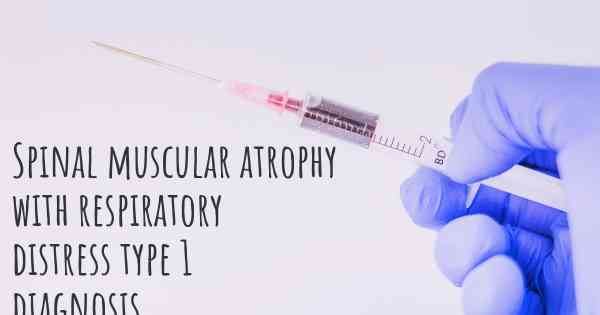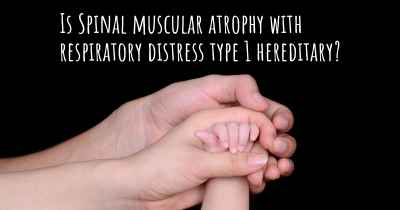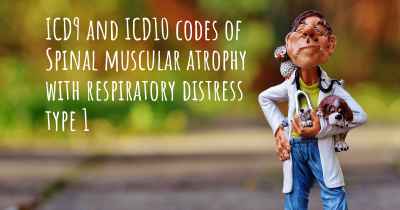How is Spinal muscular atrophy with respiratory distress type 1 diagnosed?
See how Spinal muscular atrophy with respiratory distress type 1 is diagnosed. Which specialists are essential to meet, what tests are needed and other useful information for the diagnosis of Spinal muscular atrophy with respiratory distress type 1

Spinal muscular atrophy with respiratory distress type 1 (SMARD1) is a rare genetic disorder that affects the muscles involved in breathing and movement. It is caused by mutations in the IGHMBP2 gene, which is responsible for producing a protein called immunoglobulin mu-binding protein 2. This protein plays a crucial role in the development and maintenance of motor neurons, which are nerve cells that control muscle movement.
Diagnosing SMARD1 can be challenging due to its rarity and overlapping symptoms with other neuromuscular disorders. However, there are several key steps and tests involved in the diagnostic process:
1. Clinical Evaluation: The first step in diagnosing SMARD1 is a thorough clinical evaluation by a healthcare professional. They will review the patient's medical history, assess their symptoms, and perform a physical examination. The presence of specific signs and symptoms, such as respiratory distress and muscle weakness, may raise suspicion for SMARD1.
2. Genetic Testing: Genetic testing is the most definitive method for diagnosing SMARD1. It involves analyzing a blood or saliva sample to identify mutations in the IGHMBP2 gene. This can be done through various techniques, including DNA sequencing and deletion/duplication analysis. Genetic testing can confirm the presence of SMARD1 and determine the specific genetic mutation responsible.
3. Electromyography (EMG): EMG is a diagnostic procedure that measures the electrical activity of muscles and the nerve cells controlling them. In SMARD1, EMG may reveal abnormal electrical patterns and reduced motor unit potentials, which are indicative of motor neuron dysfunction. EMG can help differentiate SMARD1 from other neuromuscular disorders.
4. Nerve Conduction Studies (NCS): NCS is often performed alongside EMG to evaluate the function of peripheral nerves. It measures the speed and strength of electrical signals as they travel along the nerves. In SMARD1, NCS may show reduced nerve conduction velocities and abnormal responses, further supporting the diagnosis.
5. Muscle Biopsy: In some cases, a muscle biopsy may be recommended to examine the structure and function of muscle tissue. This involves removing a small sample of muscle for laboratory analysis. Muscle biopsy findings in SMARD1 can reveal specific changes, such as denervation atrophy and fiber type grouping, which are consistent with motor neuron disorders.
6. Family History and Genetic Counseling: Gathering information about the patient's family history is crucial in diagnosing SMARD1. If there is a family history of the condition or unexplained infant deaths, it can raise suspicion for an inherited genetic disorder. Genetic counseling is also important to help families understand the inheritance pattern of SMARD1 and make informed decisions regarding family planning.
It is important to note that the diagnostic process may vary depending on the healthcare provider and the specific circumstances of each case. Additionally, advancements in genetic testing techniques have significantly improved the accuracy and efficiency of SMARD1 diagnosis.
In conclusion, diagnosing Spinal muscular atrophy with respiratory distress type 1 (SMARD1) involves a combination of clinical evaluation, genetic testing, electromyography (EMG), nerve conduction studies (NCS), muscle biopsy, and consideration of family history. Genetic testing is the most definitive method for confirming the diagnosis, as it can identify mutations in the IGHMBP2 gene. Early and accurate diagnosis is crucial for appropriate management and support of individuals with SMARD1.
-IGHMBP2 mutation
Posted Jan 20, 2019 by smashSMARD








